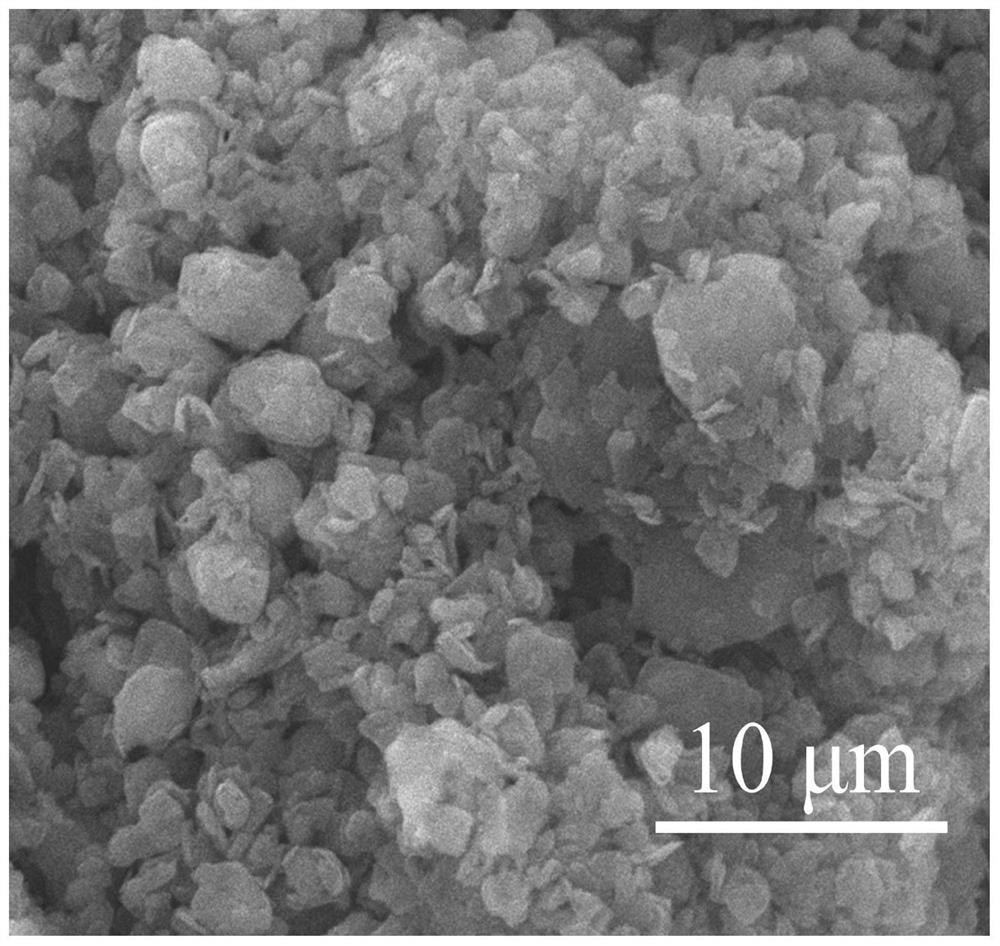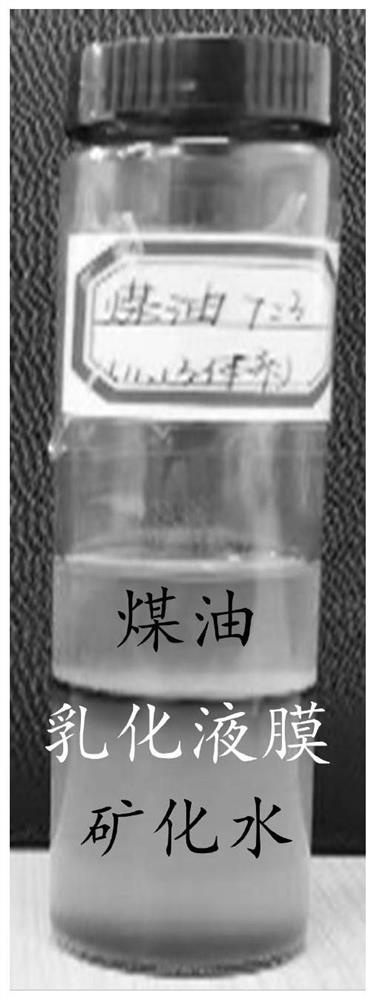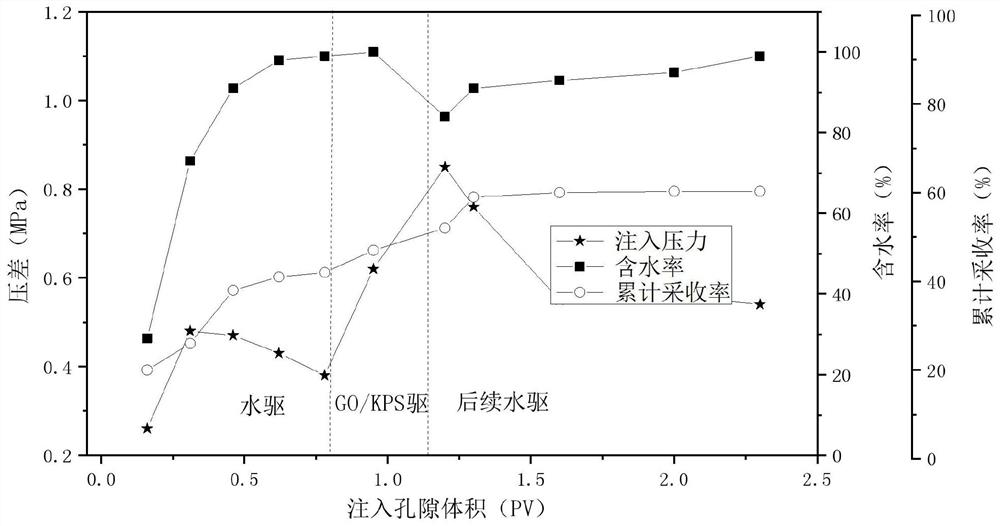Carbon-based amphiphilic nanoflow for oil displacement and preparation method
A carbon-based nano, carbon-based technology, applied in the direction of nano-carbon, chemical instruments and methods, carbon compounds, etc., to achieve the effect of improving oil displacement efficiency, improving oil recovery, and broad industrial application prospects
- Summary
- Abstract
- Description
- Claims
- Application Information
AI Technical Summary
Problems solved by technology
Method used
Image
Examples
Embodiment 1
[0032] Add 10g of graphite powder to a 500mL three-necked bottle, then add 80g of toluene and dimethylformamide solvent (mass ratio 1:1), stir in an oil bath at 80°C for 60min; The agent N-(β-aminoethyl)-γ-aminopropylmethyldimethoxysilane is added to the graphite powder solution, sealed and stirred, and reacted in an oil bath at 96°C for 6 hours, filtered, purified, and dried to obtain Coupling agent modified graphite powder. Add 3g of coupling agent-modified graphite powder into a 500mL three-necked bottle, then add 15g of toluene and dimethylformamide solvent (mass ratio 1:1), stir in an oil bath at 80°C for 60min; in an oil bath at 90°C Add 1.5g of polyoxyethylene ether into the graphite powder solution modified by the coupling agent under certain conditions, seal and stir, react in an oil bath at 90°C for 6h, filter with suction, purify, and dry to obtain carbon-based amphiphilic nanofluid 1.
Embodiment 2
[0034] Add 13g of carbon powder to a 500mL three-necked bottle, then add 90g of toluene and dimethylformamide solvent (mass ratio 1:1), stir in an oil bath at 80°C for 60min; The agent γ-aminopropyltriethoxysilane was added to the carbon powder solution, sealed and stirred, and reacted in an oil bath at 96° C. for 6 hours, filtered, purified, and dried to obtain the carbon powder modified by the coupling agent. Add 6g of carbon powder modified by coupling agent into a 500mL three-necked bottle, then add 20g of toluene and dimethylformamide solvent (mass ratio 1:1), stir in an oil bath at 80°C for 60min; in an oil bath at 90°C Add 2.0 g of polyoxyethylene ether to the solution of the coupling agent modified carbon powder under the conditions; seal and stir, react in an oil bath at 90° C. for 6 hours, filter with suction, purify, and dry to obtain the carbon-based amphiphilic nanofluid 2 .
Embodiment 3
[0036] Add 12g of graphene to a 500mL three-necked bottle, then add 100g of toluene and dimethylformamide solvent (mass ratio 1:1), stir in an oil bath at 80°C for 60min; Agent N-2-(aminoethyl)-3-aminopropyltrimethoxysilane, 5g of coupling agent γ-aminopropyltriethoxysilane are added to the graphene dispersed, sealed and stirred, in an oil bath at 96 ℃ for 6h, suction filtration, purification, and drying to obtain coupling agent-modified graphene; add 3.2g coupling agent-modified graphene to a 500mL three-necked bottle, then add 30g toluene and dimethylformamide Solvent (mass ratio 1:1), in an oil bath at 80°C, stir for 60min; under the condition of an oil bath at 90°C, add 3.3g of polyoxyethylene ether to the graphene solution modified by the coupling agent, seal and stir, in the oil bath The reaction was carried out at 90° C. for 6 hours, and the carbon-based amphiphilic nanofluid 3 was obtained by suction filtration, purification and drying.
PUM
| Property | Measurement | Unit |
|---|---|---|
| Thickness | aaaaa | aaaaa |
Abstract
Description
Claims
Application Information
 Login to View More
Login to View More - R&D
- Intellectual Property
- Life Sciences
- Materials
- Tech Scout
- Unparalleled Data Quality
- Higher Quality Content
- 60% Fewer Hallucinations
Browse by: Latest US Patents, China's latest patents, Technical Efficacy Thesaurus, Application Domain, Technology Topic, Popular Technical Reports.
© 2025 PatSnap. All rights reserved.Legal|Privacy policy|Modern Slavery Act Transparency Statement|Sitemap|About US| Contact US: help@patsnap.com



